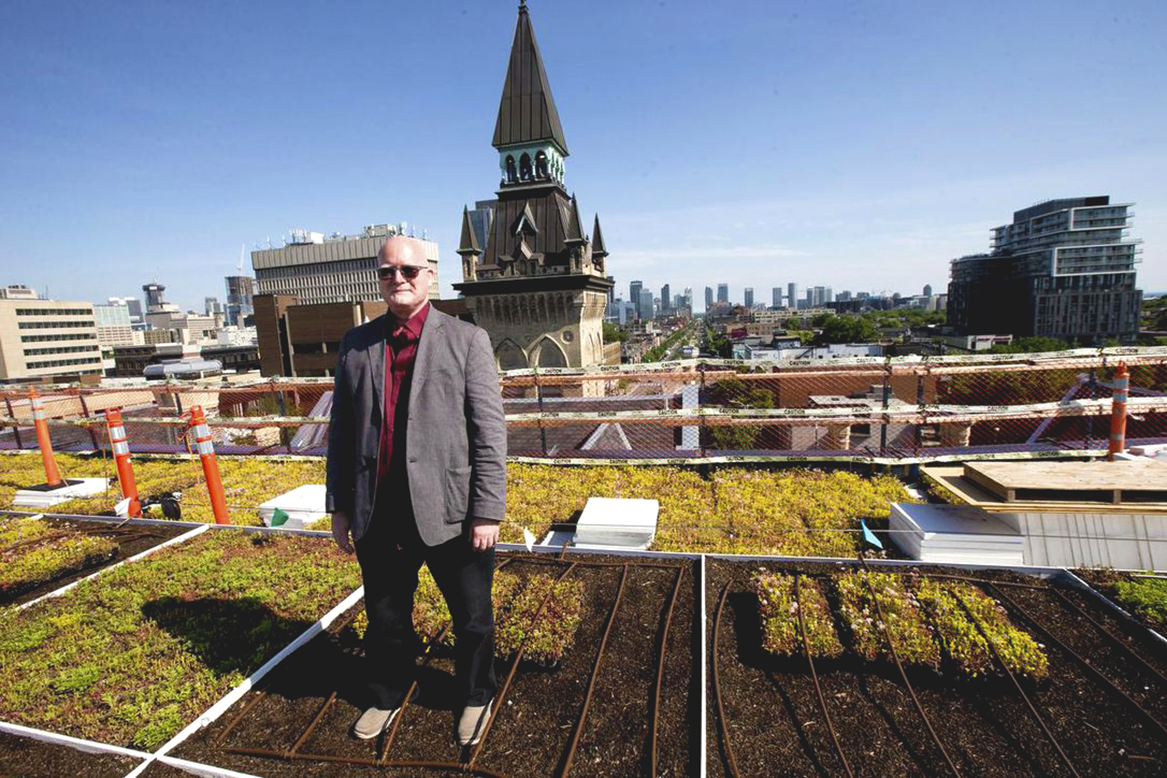
04.07.18 - The Toronto Star talks to Rob Wright & Liat Margolis about the role of green roofs in mitigating urban heat lslands
The Daniels Faculty's Green Roof Innovation Testing Laboratory (GRIT Lab) was featured in a Toronto Star article on the role that green roofs can play in mitigating urban heat island effect, a phenomenon that makes cities hotter as concrete and asphalt absorb and radiate the sun's heat.
Writer Joseph Hall toured the new green roof laboratory on the roof of 1 Spadina Crescent with Associate Professor Robert Wright, director of the Centre for Landscape Research and current Dean of U of T's Faculty of Forestry. The nearly completed facility at 1 Spadina Crescent is the GRIT Lab's second site, and an expansion of its original experimental laboratory on the roof of 230 College Street, which was constructed in 2010.
Writes Hall:
While [the GRIT Lab at 1 Spadina Crescent] will look specifically at the use of cistern-stored rainwater as a viable irrigation source for the rooftop arrays, it will also continue its predecessor’s search for ideal plant and soil combinations and investigations into the gardens’ potential to alter outdoor temperatures, moderate storm runoffs, save energy and attract pollinators.
“Every (flat) rooftop in Toronto faces south so they get maximum radiation up there,” says Wright, also dean of forestry at the school. “So whatever we can do to make more reflective surfaces or put vegetation up there will cool the environment around them.”
Work at the College St. lab showed that temperatures at the green roof’s surface were about two degrees lower than the ambient air in summertime — a dip largely caused by the plants’ release of water vapour into the air through a process known as evapotranspiration.
Associate Professor Liat Margolis — director of the GRIT Lab and director of the Daniel's Faculty's Master of Landscape Architecture program — was also featured in the story, comparing the temperature difference between the surfaces of a typical dark roof and those that have been outfitted with plantings:
On bright, hot days those sun-absorbing and often vast rooftops would be about 10 C hotter than their green counterparts, says Liat Margolis, a U of T landscape architect who heads the GRIT Lab projects.
Those black-top roofs, Margolis says, are major contributors to the heat-island, micro-climate effects that broil many parts of the city in summertime.
But since introducing a bylaw in 2009 mandating green roofs be installed on all new developments with floor areas greater than 2,000 square metres, Toronto now leads the continent in their deployment.
The GRIT Lab is a state-of-the-art facility — and the only one of its kind testing the environmental performance associated with green roofs, green walls and solar photovoltaic technologies in Canada.
For more information on the GRIT Lab, visit the Daniels Faculty's website.

